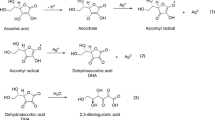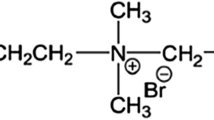Abstract
To evaluate i) the inhibitory and bactericidal activity of cashew nut shell liquid (CNSL) and its isolated compounds (anacardic acid and cardol) against oral bacteria; ii) the biofilm formation inhibition, resin-dentin bond strength and physicochemical properties of a dental adhesive incorporated with these substances. The antibacterial effect of CNSL, anacardic acid, and cardol were assessed by determining the minimum inhibitory (MIC) and minimum bactericidal (MBC) concentrations. Effect in inhibiting biofilm formation of the adhesive incorporated with the substances (15 μg/ml) against a mixed-species biofilm of Streptococcus mutans and Candida Albicans and was determined by direct contact test. Additional Analysis included microtensile bond strength (μTBS) test, elastic modulus (EM), flexural strength (FS), degree of conversion (DC), water sorption (WS) and solubility (SL). The data were submitted to statistical analysis by one-way ANOVA and Tukey’s test (p < 0.05). CNSL, anacardic acid and cardol showed antibacterial activity for all strains tested, with MIC and MBC values ranging from 3.12 to 25 μg/ml. There was no growth of colonies forming units in the adhesives incorporated with the substances. EM increased in the adhesive incorporated with anacardic acid, decreased after incorporation of cardol and it was not affected by incorporation of CNSL. The substances tested showed no effect in FS, DC, WS, SL and μTBS. In conclusion, the CNSL, anacardic acid and cardol showed antibacterial effects against oral bacteria and, the incorporation of substances did not reduce the performance of the adhesive.



Similar content being viewed by others
References
Kassebaum NJ, Smith AGC, Bernabé E, Fleming TD, Reynolds AE, Vos T, Murray CJL, Marcenes W, GBD 2015 Oral Health Collaborators. Global, regional, and national prevalence, incidence, and disability-adjusted life years for oral conditions for 195 countries, 1990–2015: a systematic analysis for the global burden of diseases, injuries, and risk factors. J Dent Res. 2017;2017(96):380–7.
World Health Organization, Global Oral Health Database. WHO Collaborating Centre for Education, Training and Research in Oral health. 2014. https://www.euro.who.int. Accessed 20 Jan 2015.
While S, Hölken I, Haidarschin G, Adelung R, Kern M. Biaxial flexural strength of new BisGMA/TEGDMA based composites with different fillers for dental application. Dent Mater. 2016;32:1073–8.
Moraschini V, Fai CK, Alto RM, Dos Santos GO. Amalgam and resin composite longevity of posterior restorations: a systematic review and meta-analysis. J Dent. 2015;46:1043–50.
Demarco FF, Collares K, Correa MB, Cenci MS, Moraes RR, Opdam NJS. Should my composite restorations last forever? Why are they failing? Braz Oral Res. 2017;28:92–9.
Demarco FF, Corrêa MB, Cenci MS, Moraes RR, Opdam NJM. Longevity of posterior composite restorations: not only a matter of materials. Dent Mater. 2012;28:87–101.
Fejerskov O, Nyvad B, Kidd E. Dental caries: the disease and its clinical management. 3rd ed. Oxford: Wiley-Blackwell; 2015.
Burujeny SB, Atai M, Yeganeh H. Assessments of antibacterial and physico-mechanical properties for dental materials with chemically anchored quaternary ammonium moieties: thiol–ene–methacrylate vs. conventional methacrylate system. Dent Mater. 2015;31:244–61.
Masashi M, Akimasa T, Keishi T, Toshiki T, Hiroyasu K, Jeffrey AP. Important compositional characteristics in the clinical use of adhesive systems. J oral Sci. 2014;56:1–9.
Zhou W, Liu S, Zhou X. Modifying adhesive materials to improve the longevity of resinous restorations. Int J Mol Sci. 2019;20:723–43.
Pinto CF, Berger SB, Cavalli V, Da Cruz SE, Gonçalves RB, Ambrosano GM, Giannini M. In situ antimicrobial activity and inhibition of secondary caries of self-etching adhesives containing an antibacterial agent and/or fluoride. Am J Dent. 2015;28:167–73.
Chen L, Suh BI, Yang J. Antibacterial dental restorative materials: a review. Am J Dent. 2018;15:6B-12B.
Gao SS, Zhao IS, Duffin S, Duangthip D, Lo ECM, Chu CH. Revitalising silver nitrate for caries management. Int J Environ Res Public Health. 2018;15:1–9.
Zhou J, Tan J, Yang X, Cheng C, Wang X, Chen L. Effect of chlorhexidine application in a self-etching adhesive on the immediate resin-dentin bond strength. J Adhes Dent. 2010;12:27–31.
Yoo S, Murata RM, Duarte S. Antimicrobial traits of tea- and cranberry-derived polyphenols against Streptococcus Mutans. Caries Res. 2011;45:327–35.
Vasconcelos MS, Gomes-Rochette NF, De Oliveira ML, Nunes-Pinheiro DC, Tomé AR, Maia FYS, Pinheiro FG, Moura CF, Miranda MR, Mota EF, Melo DF. Anti-inflamatory and wound healing potential of cashew apple juice (Anacardium occidentale L.) in mice. Exp Biol Med. 2015;240:1648–55.
Lomonaco D, Mele G, Mazzetto SE. Cashew nut shell liquid (CNSL): from an agro-industrial waste to a sustainable alternative to petrochemical resources. In: Anilkumar P, editor. Cashew nut shell liquid: a gold field for functional materials. Springer International Publishing; 2017. p. 19–38.
Ashraf SM, Rathinasamy K. Antibacterial and anticancer activity of the purified cashew nut shell liquid: implications in cancer chemotherapy and wound healing. Nat Prod Res. 2018;32:2856–60.
Himejima M, Kubo I. Antibacterial agents from the cashew Anacardium occidentale (Anacardiaceae) nut shell oil. J Agric Food Chem. 1991;39:418–21.
Bourbia M, Ma D, Cvitkovitch DG, Santerre JP, Finer Y. Cariogenic bacteria degrade dental resin composites and adhesives. J Dent Res. 2013;92:989–94.
Fugolin APP, Pfeifer CS. New resins for dental composites. J Dent Res. 2017;96:185–91.
Liang J, Li M, Ren B, Wu T, Xu HHK, Liu Y, Peng X, Yang G, Weir MD, Zhang S, Cheng L, Zhou X. The anti-caries effects of dental adhesive resin influenced by the position of functional groups in quaternary ammonium monomers. Dent Mater. 2018;34:400–41.
Lomonaco D, Maia FJ, Mazzetto SE. Thermal evaluation of cashew nutshell liquid as new bioadditives for poly (methyl methacrylate). J Therm Anal Calorim. 2012;111:619–26.
Clinical And Laboratory Standards Institute - CLSI, Methods for dilution antimicrobial susceptibitity test for bacteria that grow aerobically. Nineth Information Supplement. CLSI document M7-A9. 2012.
Sarker SD, Nahar L, Kumarasamy Y. Microtitre plate-based antibacterial assay incorporating resazurin as an indicator of cell growth, and its application in the in vitro antibacterial screening of phytochemicals. Methods. 2007;42:321–4.
Cuevas-Suárez CE, Ramos TS, Rodrigues SB, Collaresc FM, Zanchi CH, Lundd RG, Silva AF, Piva E. Impact of shelf-life simulation on bonding performance of universal adhesive systems. Dent Mater. 2019;35:e204–19.
International Organization for Standardization. ISO 4049:2010, Dentistry polymer based restorative materials. http://www.iso.org/iso/home/store.htm. 2019. Accessed 02 July 2019.
Farrugia C, Camilleri J. Antimicrobial properties of conventional restorative filling materials and advances in antimicrobial properties of composite resins and glass ionomer cements—a literature review. Dent Mater. 2015;31:e89–99.
Hamad FB, Mubofu EB. Potential biological applications of bio-based anacardic acids and their derivatives. Int J Mol Sci. 2015;16:8569–90.
Oh S, Suzuki Y, Hayashi S, Suzuki Y, Koike S, Kobayashi Y. Potency of cashew nut shell liquid in rumen modulation under diferente dietary conditio ns and indication of its surfactante action against rumen bacteria. J Anim Sci Technol. 2017;59:1–7.
Green IR, Tocoli FE, Lee SH, Nihei K, Kubo I. Design and evaluation of anacardic acid derivatives as anticavity agents. Eur J Med Chem. 2008;43:1315–20.
Murata W, Tanaka T, Kubo I, Fujita K. Protective effects of α-tocopherol and ascorbic acid against cardol-induced cell death and reactive oxygen species generation in Staphylococcus aureus. Planta Med. 2013;79:768–74.
Mankovskaia A, Lévesque CM, Prakki A. Catechin-incorporated dental copolymers inhibit growth of Streptococcus mutans. J Appl Oral Sci. 2013;21:203–7.
Cheng L, Li J, He L, Zhou X. Natural products and caries prevention. Caries Res. 2015;49:38–45.
Moreira MA, Souza NO, Sousa RS, Freitas DQ, Lemos MV, De Paula DM, Maia FJN, Lomanaco D, Mazzetto SE, Feitosa VP. Efficacy of new natural biomodification agents from Anacardiaceae extracts on dentin collagen cross-linkings. Dent Mater. 2017;33:1103–9.
De-Paula DM, Lomonaco D, Ponte AMP, Cordeiro KE, Moreira MM, Mazzetto SE, Feitosa VP. Influence of collagen cross-linkers addition in phosphoric acid on dentin biomodification and bonding of an etch-and-rinse adhesive. Dent Mater. 2020;36:e1–8.
Barcellos DC, Fonseca BM, Pucci CR, Cavalcanti B, Persici ES, Gonçalves SE. Zn-doped etch-and-rinse model dentin adhesives: dentin bond integrity, biocompatibility, and properties. Dent Mater. 2016;32:940–50.
Gotti VB, Feitosa VP, Sauro S, Correr-Sobrinho L, Leal FB, Stansbury JW, Correr AB. Effect of antioxidants on the dentin interface bond stability of adhesives exposed to hydrolytic degradation. J Adhes Dent. 2015;17:35–44.
Neri JR, Yamauti M, Feitosa VP, Pires AP, Araújo RS, Santiago SL. Physicochemical properties of a methacrylate-based dental adhesive incorporated with epigallocatechin-3-gallate. Braz Dent J. 2014;25:528–31.
Fonseca BM, Barcellos DC, Silva TM, Borges ALS, Cavalcanti BN, Prakki A, Oliveira HPM, Gonçalves SEP. Mechanical-physicochemical properties and biocompatibility of catechin-incorporated adhesive resins. J Appl Oral Sci. 2019;27:2–11.
Tjäderhane L, Nascimento FD, Breschi L, Mazzoni A, Tersariol IL, Geraldeli S, Tezvergilmutluay ACM, Carvalho RM, Tay FR, Pashley DH. Strategies to prevent hydrolitic degradation of the hybrid layer: a review. Dent Mater. 2013;29:999–1011.
Tallury P, Airrabeelli R, Li J, Paquette D, Kalachandra S. Release of antimicrobial and antiviral drugs from methacrylate copolymer system: effect of copolymer molecular weight and drug loading on drug release. Dent Mater. 2008;24:274–80.
Palasuk J, Windsor LJ, Platt JÁ, Lvov Y, Geraldeli S, Bottini MC. Doxycycline-loaded nanotube-modified adhesives inhibit MMP in a dose-dependent fashion. Clin Oral Investig. 2019;22:1243–52.
Acknowledgements
This work was financially supported by Coordenação de Aperfeiçoamento de Pessoal de Nível Superior (CAPES) [grant numbers 88882.454131/2019-01]. The authors would like to thank the generous donations of adhesive system Ambar APS by FGM.
Author information
Authors and Affiliations
Contributions
NdOS: investigation, validation, writing—original draft. DAC: writing—original draft, conceptualization. NdSR: writing—original draft, formal analysis. TTB: investigation. DL: methodology, resources, writing—review and editing. SEM: methodology, investigation. CHGM: visualization, methodology. LAC: resources, writing—review and editing. VdPAS: supervision, project administration, writing—review and editing.
Corresponding author
Ethics declarations
Conflict of interest
The authors declare that they have no known competing financial interests or personal relationships that could have appeared to influence the work reported in this paper.
Additional information
Publisher's Note
Springer Nature remains neutral with regard to jurisdictional claims in published maps and institutional affiliations.
Rights and permissions
About this article
Cite this article
de Oliveira Souza, N., Cunha, D.A., Sousa Rodrigues, N. et al. Physicochemical and microbiological assessment of a dental adhesive doped with cashew nut shell liquid. Odontology 110, 434–443 (2022). https://doi.org/10.1007/s10266-021-00672-7
Received:
Accepted:
Published:
Issue Date:
DOI: https://doi.org/10.1007/s10266-021-00672-7




